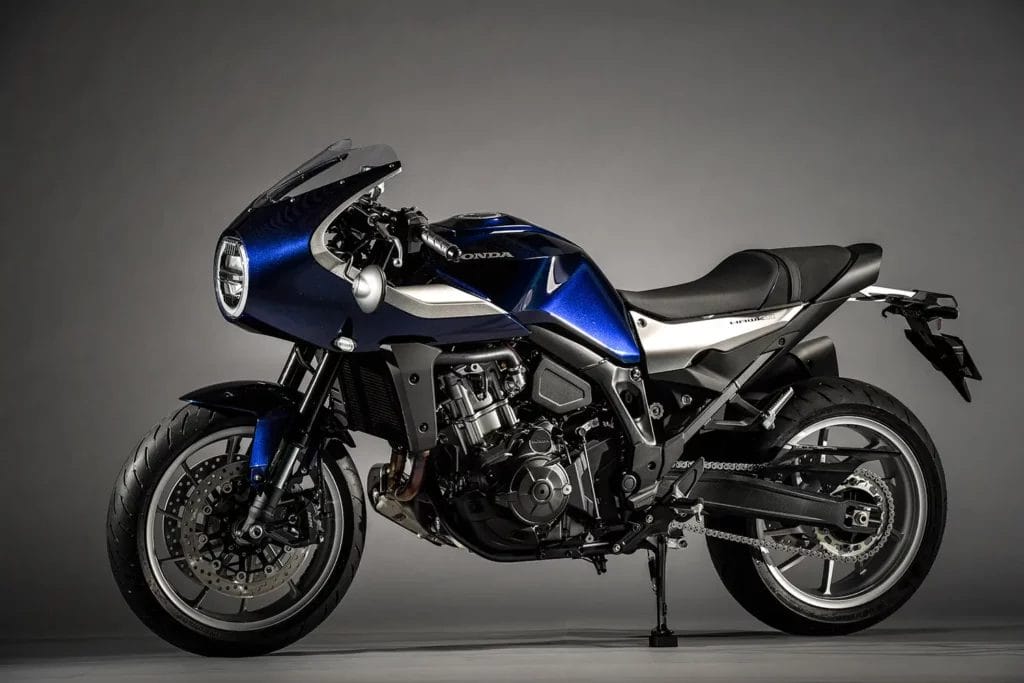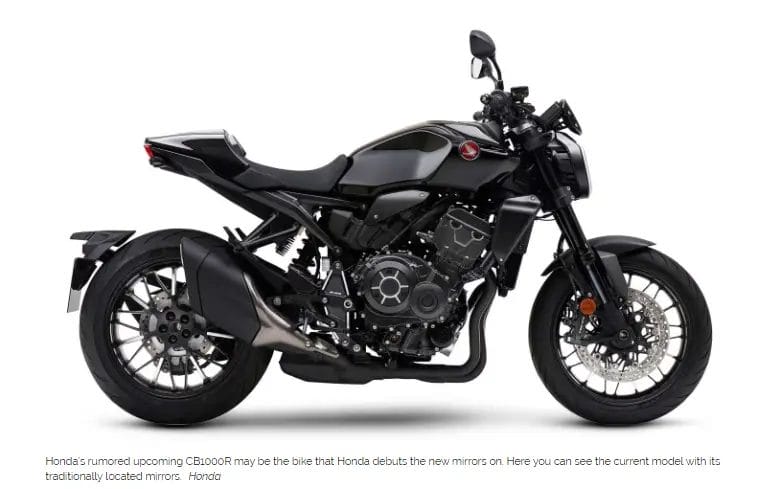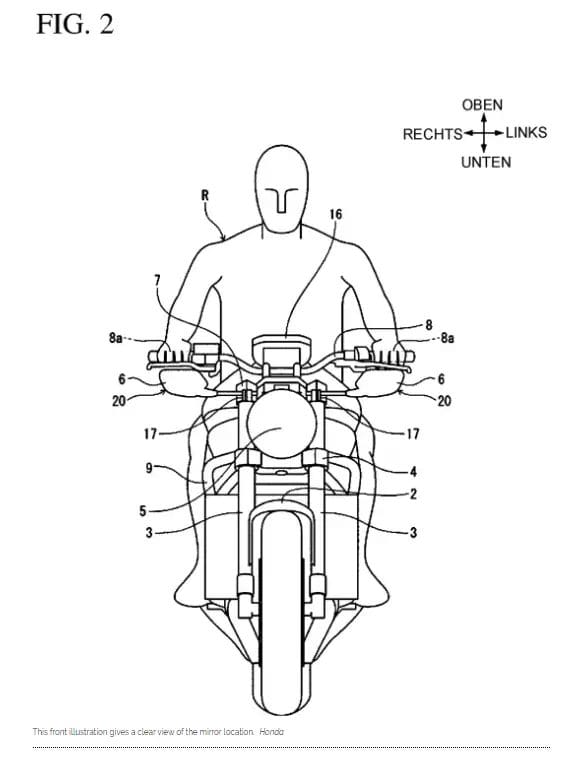You might not think there are many ways to develop motorcycle mirrors. However, Honda has created a layout that promises not only to give a better view of what’s behind, but also to offer handling benefits compared to conventional designs.
Although logic might suggest that rear-view cameras will eventually replace mirrors altogether, the simplicity and versatility of a mirror is hard to beat. Cameras and screens have problems when it comes to adjusting to different light levels and their fixed field of view means you can’t stretch your neck to get a bit more vision when it’s useful. Add to that the low cost of a piece of reflective glass and a series of legislative problems around the world that hinder the adoption of camera systems, the traditional mirror is here to stay for the foreseeable future.

Since mirrors have been the norm for so long, it’s a surprise to see that Honda has filed a patent application for a design that it believes is so different from others that it deserves patent protection. The idea itself is incredibly simple: The mirrors are mounted on conventional-looking rods, but they are attached to the fork under the upper triple clamp and positioned under the handlebars rather than on top.
There are three main advantages to the arrangement, explained in the patent document. The first, and most important, is improved visibility. Although mirrors hanging below the handlebars are not a new idea – there are many aftermarket handlebar end mirrors that are mounted in this way – Honda’s design positions them a little further forward, so you can look over your hands to see them. The advantage comes from the fact that the view the mirrors reflect is below the level of your arms and elbows, so vision is unobstructed. In fact, this is an idea that is already used on a Honda production bike, the Hawk 11 cafe racer, only in Japan, based on the engine and frame of the Africa Twin. However, on the Hawk the mirrors are mounted on the fairing, which means that they don’t offer the other two advantages of the new version that the brand is trying to patent.

These stem from the fact that, since the mirrors don’t need to be positioned far enough to the side to see around the arms and shoulders, they can be mounted relatively far inwards. Moving them towards the centerline of the bike means that the aerodynamic forces acting on the mirrors have less influence on the steering. The third advantage is that, because they are mounted closer to the steering axis, the inertia introduced by the weight of the mirrors is reduced, improving steering feel and response.


Taken together, these benefits make a convincing case for this type of mirror and the brand already has bikes in development that could benefit from the design. The most significant, and closest to production, is the expected replacement for the CB1000R. A fairly detailed set of patent drawings depicting this bike, based on the frame and engine of the CBR1000RR, appeared last year, albeit with key styling elements – the headlight, tank and rear – replaced by generic shapes. The mirrors shown in those drawings were also generic, so the next generation CB1000R, which should be a much higher performance machine than the current version, could well be the debut platform for the suspended mirror idea presented in Honda’s new patent application.







